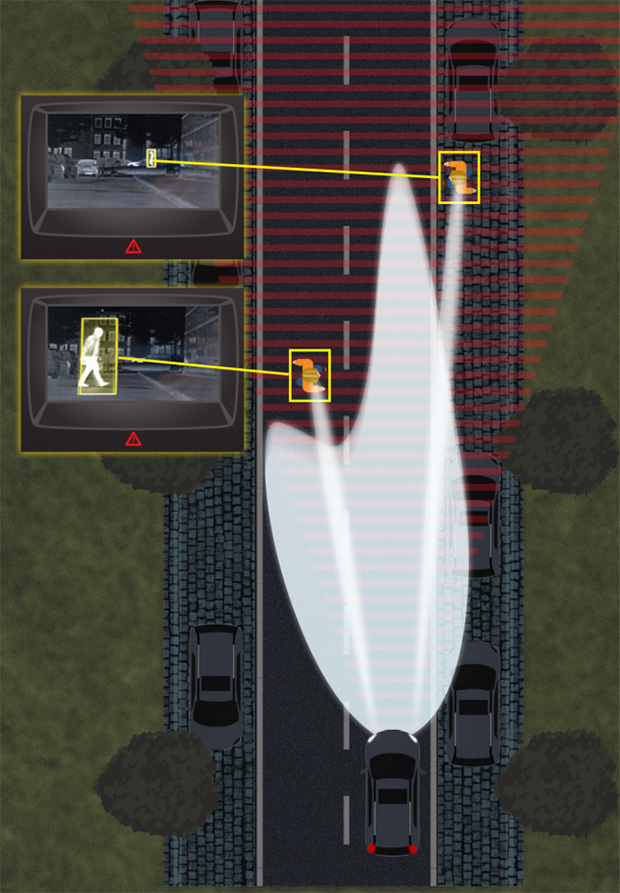Ford’s Advanced Headlight Tech Makes Night Driving Safer By Illuminating Animals And People
Ford rightfully claims that driving on unlit roads at night can be a "nerve-wracking experience." No, not because you're lost in a rural area and are about to live out a scene in Wrong Turn, but because you never know when an animal or human might be walking in the shadows on the side of the road. To help you spot these kinds of potential hazards and have more time to react, Ford is working on some interesting headlight technologies.
There are a few things at play here. One is the use of GPS information to trigger an enhanced lighting system when going around a curve or dips on a chosen route. If GPS isn't available for whatever reason, a video camera will detect lane markings and predict where the road curves. That information is saved so that the next time you use the road, the headlights automatically adapt. This is a technology that Ford expects to roll out soon.

Perhaps more interesting is Ford's "Spot Lighting" technology, which is currently in the pre-development phase. The way it works is an infra-red camera on the front of the car's grille locates and tracks people and larger animals like dogs based on their body heat by up to 120 meters (around 394 feet) away. Underneath the headlights are spot lights that then direct their beams onto whatever was detected, giving the driver around 2 to 3 additional seconds to react. The hazard in question, be it a cyclist or whatever, is also highlighted on a screen inside the car.
“Many people who drive at night have had to quickly react to someone or something suddenly appearing in the road – as if from nowhere. Ford’s Camera-Based Advanced Front Lighting System and Spot Lighting help ensure the driver is quickly alerted to people or animals that could present a danger,” said Ken Washington, vice president, Ford Research and Advanced Engineering.
Citing stats from the U.K. government, Ford points out that one in five accidents happen on unlit roads. Ford hopes its headlight technologies will cut that number down, though it's not clear how long it might take its Spot Lighting system to become available commercially.
There are a few things at play here. One is the use of GPS information to trigger an enhanced lighting system when going around a curve or dips on a chosen route. If GPS isn't available for whatever reason, a video camera will detect lane markings and predict where the road curves. That information is saved so that the next time you use the road, the headlights automatically adapt. This is a technology that Ford expects to roll out soon.

Perhaps more interesting is Ford's "Spot Lighting" technology, which is currently in the pre-development phase. The way it works is an infra-red camera on the front of the car's grille locates and tracks people and larger animals like dogs based on their body heat by up to 120 meters (around 394 feet) away. Underneath the headlights are spot lights that then direct their beams onto whatever was detected, giving the driver around 2 to 3 additional seconds to react. The hazard in question, be it a cyclist or whatever, is also highlighted on a screen inside the car.
“Many people who drive at night have had to quickly react to someone or something suddenly appearing in the road – as if from nowhere. Ford’s Camera-Based Advanced Front Lighting System and Spot Lighting help ensure the driver is quickly alerted to people or animals that could present a danger,” said Ken Washington, vice president, Ford Research and Advanced Engineering.
Citing stats from the U.K. government, Ford points out that one in five accidents happen on unlit roads. Ford hopes its headlight technologies will cut that number down, though it's not clear how long it might take its Spot Lighting system to become available commercially.

